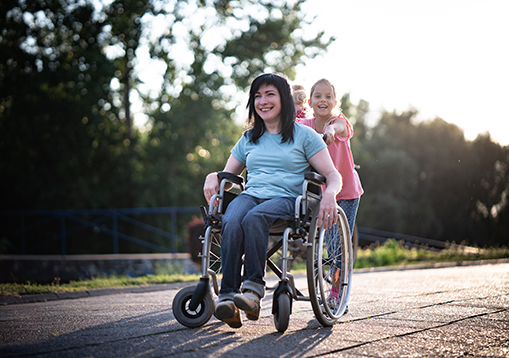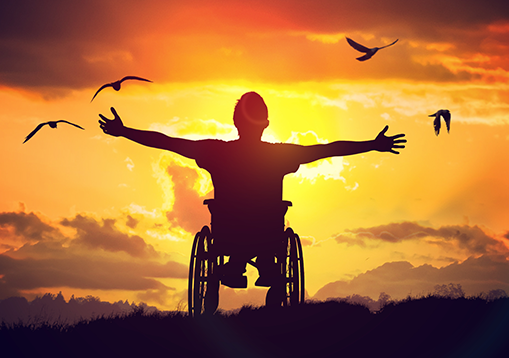Amyotrophic Lateral Sclerosis (ALS)
What is ALS?

What Happens to Your Body When You Experience ALS?
ALS damages motor neurons in the brain and spinal cord. Motor neurons are nerve cells that control muscle movement. Upper motor neurons send messages from the brain to the spinal cord, and lower motor neurons send messages from the spinal cord to the muscles. Motor neurons are an important part of the body's neuromuscular system. The neuromuscular system lets our bodies move and is made up of the brain, many nerves, and muscles. Things that we do every day — like breathing, walking, running, lifting stuff, and even reaching for a glass of water — are all controlled by the neuromuscular system. Over time, ALS causes the motor neurons in the brain and spinal cord to shrink and disappear, so that the muscles no longer receive signals to move. So, the muscles get smaller and weaker. Gradually the body becomes paralyzed, which means that the muscles no longer work. However, someone with ALS, even at an advanced stage, can still see, hear, smell, and feel touch. The nerves that carry feelings of hot, cold, pain, pressure, or even being tickled, are not affected by Lou Gehrig's disease. In some people with ALS, the parts of the brain that allow us to think, remember, and learn also are affected by the disease.
Experienced in Various ALS Cases
Learn More About ALS
Lou Gehrig's disease is different for every person who has it. In general, muscle weakness, especially in the arms and legs, is an early symptom for more than half of people with ALS. Other early signs are tripping or falling a lot, dropping things, having difficulty speaking, and cramping or twitching of the muscles. As the disease gets worse over time, eating, swallowing, and even breathing may become difficult.
It may take several months to know for sure that someone has Lou Gehrig's disease. The illness can cause symptoms similar to other diseases that affect nerves and muscles, including Parkinson's disease and stroke. A doctor will examine the patient and do special tests to see if it might be one of those other disorders.
One of the tests, an electromyogram, or EMG, can show that muscles are not working because of damaged nerves. Other tests include X-rays, magnetic resonance imaging (MRI), a spinal tap, and blood and urine evaluations.
Sometimes a muscle or nerve biopsy is needed. A biopsy is when a doctor takes a tiny sample of tissue from the body to study under a microscope. Examining this tissue can help the doctor figure out what's making someone sick.
Currently, there's no way to prevent or cure Lou Gehrig's disease. But treatments are available that can help. Medicines can control symptoms, such as muscle cramping and difficulty swallowing, and other drugs can slow the development of the disease.
Physical therapy can help people with ALS cope with muscle loss and breathing problems. Special equipment is also provided when it becomes necessary. For instance, a power wheelchair can let a paralyzed person with ALS get around. A machine called a ventilator can help someone breathe.

Living With Lou Gehrig's Disease
Living with Lou Gehrig's disease is physically difficult, but it is reassuring to know that the mind usually is not affected. Most people with ALS can think as clearly as ever, are able to maintain relationships with friends and family, and should be treated respectfully and normally. It's normal for family members to feel upset, overwhelmed, and sad if a loved one has ALS. Counseling, as well as support from other family members and friends, can make it easier to deal with the challenges they face. Communication can be difficult because the disease affects breathing and the muscles needed for speech and arm movement. With patience, the families of patients with ALS can learn to communicate effectively with their loved ones. Researchers continue to study ALS as they try to understand why it happens, and how the disease damages the motor neurons in the brain and spinal cord. As they learn more about the disease, researchers can continue to develop new and better treatments.



